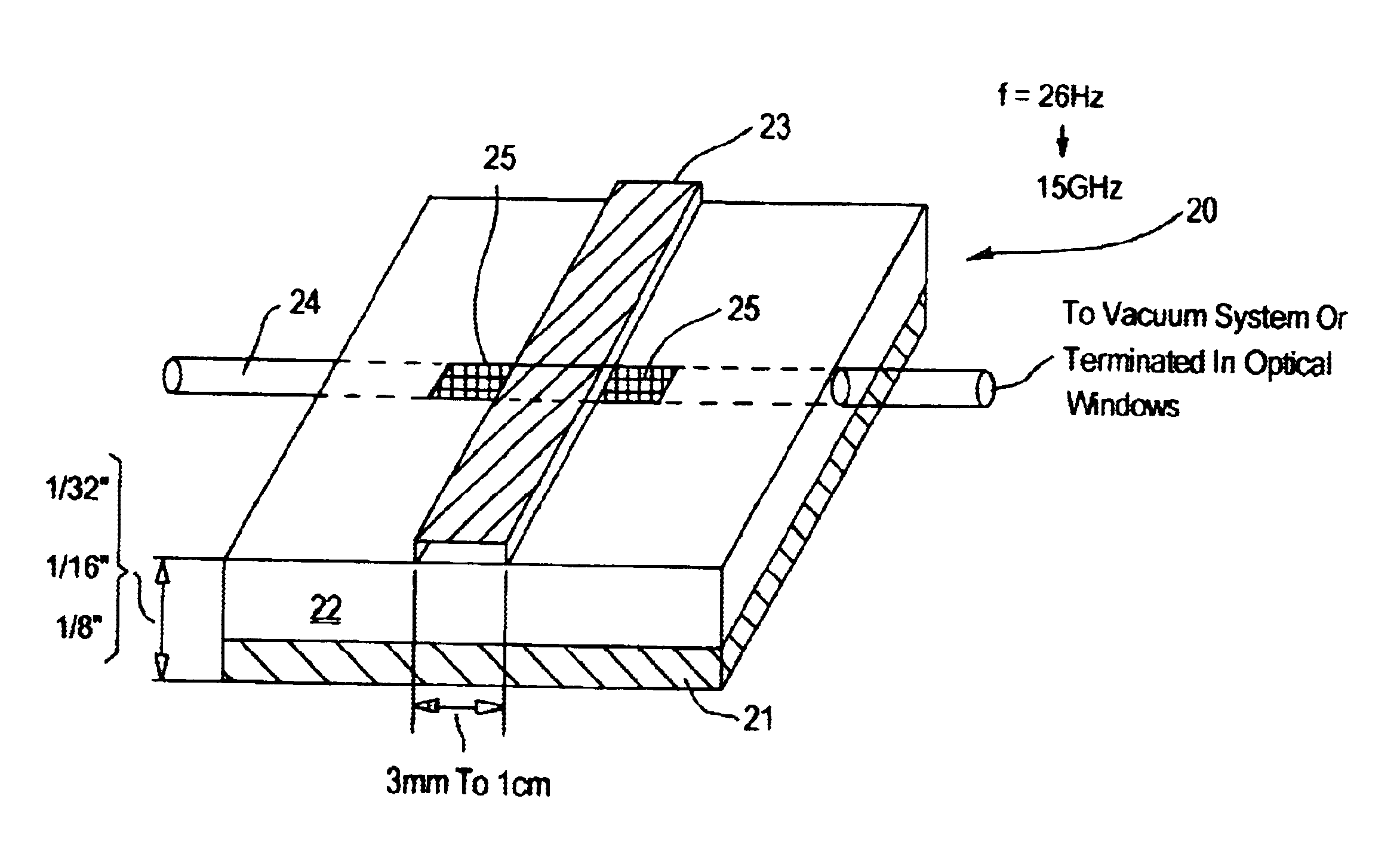Microwave stripline applicators
a technology of microwave stripline and applicator, which is applied in the direction of waveguides, transit-tube circuit elements, structural circuit elements, etc., can solve the problems of reducing the scale of coaxial applicators, reducing the efficiency of coaxial applicators, and not being optimal for small discharges
- Summary
- Abstract
- Description
- Claims
- Application Information
AI Technical Summary
Benefits of technology
Problems solved by technology
Method used
Image
Examples
Embodiment Construction
The present invention relates to new applicator technologies that enable the excitation of very small microwave discharges. Discharge dimensions range from a few millimeters down to or even less than a few hundred microns. Additionally the applicator technology that is described utilizes stripline circuits and coupling techniques. Thus excitation frequencies can vary from a few 100 MHz to 10-30 GHz, and possibly even higher frequencies. Microwave applicator geometries are described that enable the matching and focusing of microwave energy into very small volumes. Since .lambda.>>d the electromagnetic focusing can be understood by using transmission theory and quasistatic electromagnetic circuit models.
The possibility of higher frequency excitation has the additional benefit of creating discharges with very high plasma densities. For example, if plasma resonators are formed where ##EQU5##
then the excitation of the discharge at 10 to 30 GHz will create a plasma with a density of appro...
PUM
| Property | Measurement | Unit |
|---|---|---|
| thick | aaaaa | aaaaa |
| thick | aaaaa | aaaaa |
| width | aaaaa | aaaaa |
Abstract
Description
Claims
Application Information
 Login to View More
Login to View More - R&D
- Intellectual Property
- Life Sciences
- Materials
- Tech Scout
- Unparalleled Data Quality
- Higher Quality Content
- 60% Fewer Hallucinations
Browse by: Latest US Patents, China's latest patents, Technical Efficacy Thesaurus, Application Domain, Technology Topic, Popular Technical Reports.
© 2025 PatSnap. All rights reserved.Legal|Privacy policy|Modern Slavery Act Transparency Statement|Sitemap|About US| Contact US: help@patsnap.com



